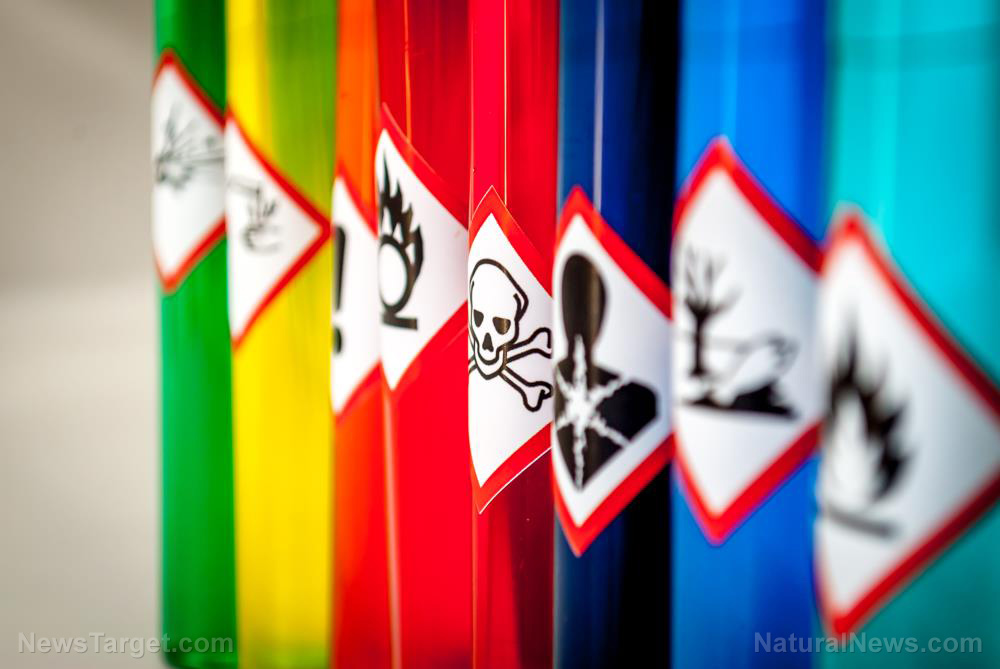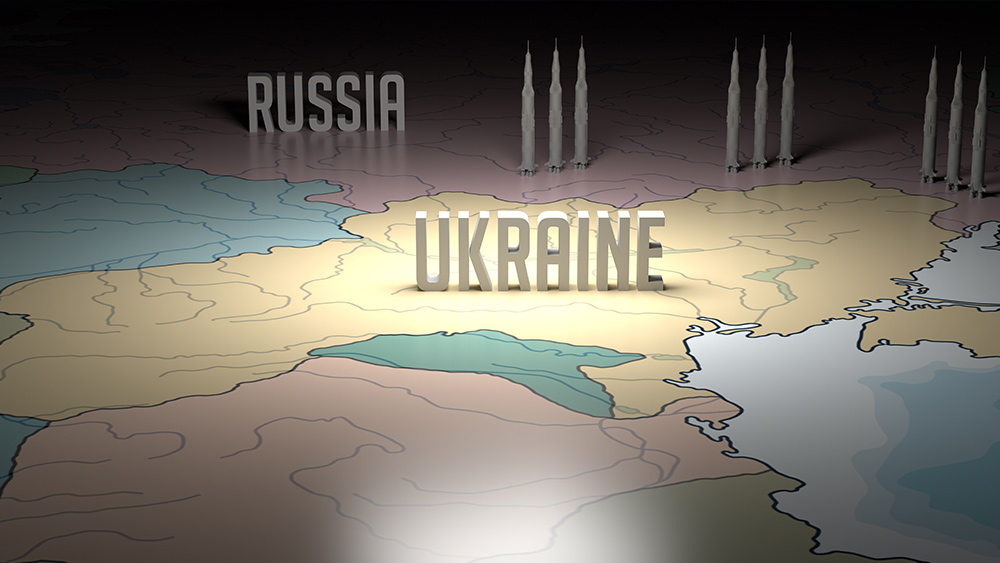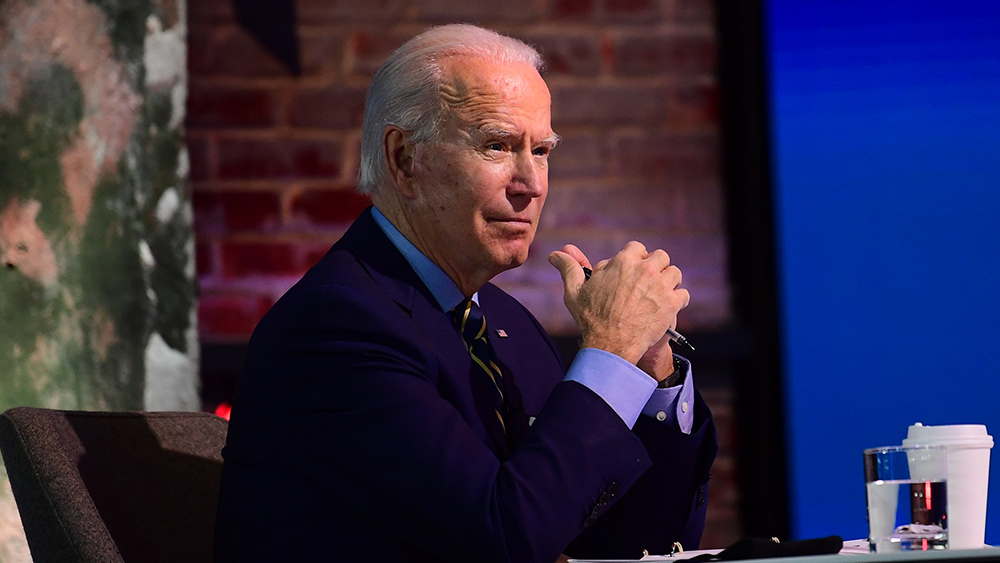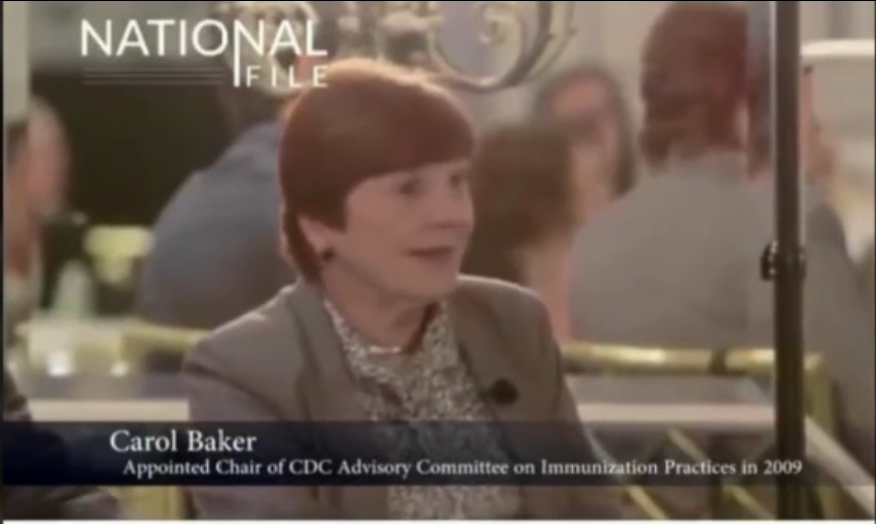COVID emergency, climate emergency: Same thing
02/15/2023 / By News Editors

In February 2022, 1,140 organizations sent President Biden a letter urging him to declare a “climate emergency.” A group of US Senators did the same, in October 2022, and a House bill, introduced in 2021, also called on the president to “declare a national climate emergency under the National Emergencies Act.”
(Article by W. Aaron Vandiver republished from BrownStone.org)
Biden has considered declaring such an emergency, but so far he has declined, to the disappointment of many progressives.
The United Nations (UN) has urged all countries to declare a climate emergency. The state of Hawaii and 170 local US jurisdictions have declared some version of one. So have 38 countries, including European Union members and the UK, and local jurisdictions around the world, together encompassing about 13 percent of the world’s population.
Hillary Clinton was reportedly prepared to declare a “climate emergency” if she had won the 2016 election.
A “climate emergency” is in the zeitgeist. Those words were surely uttered by the billionaires, technocrats and corporate CEOs attending the recent World Economic Forum (WEF) meeting in Davos.
But what does it actually mean for the president of the US to officially declare a “climate emergency?”
Most people don’t realize that under US law, a national emergency declaration triggers a set of emergency powers that allows a president to act without the need for further legislation.
The Brennan Center for Justice compiled a list of the 123 statutory powers that may become available to the president upon declaration of a national emergency (plus 13 that become available when Congress declares a national emergency).
The scope of these powers is difficult to summarize, except to say that if exercised to their maximum extent, they potentially encompass vast areas of American life.
For civil libertarians across the political spectrum, from left to right, a “climate emergency” should be a focus of concern.
Even environmentalists who may instinctively and understandably support the idea should be worried about the potential for the authoritarian model of “emergency” governance that arose during COVID-19 to overtake climate policy.
One can believe in protecting and preserving the planet, as I do, while insisting on environmental policies that are consistent with democracy, civil liberties, and human rights.
Elements of the left and right should be coming together to reject demands that we sacrifice democratic norms, rights, and freedoms for flimsy promises of safety from political and economic elites who seek to exploit a crisis — a cynical ploy that COVID-19 thoroughly exposed.
Recall that it was President Trump who issued a COVID-19 “national emergency” declaration on March 13, 2020. This was accompanied by “public health emergency” orders at the federal and state levels, and by the World Health Organization (WHO), which unleashed an intense phase of lockdowns and a tsunami of health-and-safety rules and restrictions — many imposed on the public in circumvention of the normal democratic process.
Before that, I might have supported a “climate emergency” without a second thought. Now, after three years of lockdowns, mandates, censorship and other heavy-handed policies, the trust is gone.
The leaders pushing for a new emergency who have failed to repudiate the abuses of the last one — even those with the purest of intentions regarding the environment — have lost credibility.
Many others feel the same way. We need to know exactly what a “climate emergency” really means.
So what would an official “climate emergency” look like?
Just like the “COVID-19 emergency,” it would be far-reaching, with potentially dramatic effects on the economy and society. Emergency measures may even cause serious harm to the environment — while failing to meaningfully address climate change.
Even if you tend to pay attention to climate-related issues, the implications of a “climate emergency” may surprise you.
How would a ‘climate emergency’ even work?
Environmental advocacy groups such as the Center for Biological Diversity have called on the Biden administration to invoke specific emergency statutes that would give him the power to:
- Ban crude oil exports.
- Stop oil and gas drilling on the outer continental shelf.
- Curtail international trade and investment in fossil fuels.
The Center for Biological Diversity says that these emergency powers would allow Biden to put the U.S. on the path to “jettison the fossil-fuel economy and burgeon a just, anti-racist, and regenerative America in its place.”
However, there are many reasons to doubt such grandiose claims. Numerous energy and materials experts, including the well-known analyst Vaclav Smil, have concluded that a rapid transition to “green” energy may not even be possible.
Further, the Biden administration would probably not take steps to quickly phase out fossil fuels at the risk of crashing the economy. As BlackRock noted its 2023 Global Outlook: “The faster the transition [the] more volatile inflation and economic activity.”
If Biden exercised his emergency powers, he would most likely use them to fast-track “green” energy projects while stopping far short of serious efforts to phase out fossil fuels.
The Inflation Reduction Act of 2022 already set the precedent: It included hundreds of billions of dollars for “green” energy subsidies and opened millions of acres of public lands and offshore waters to fossil-fuel development.
This play-both-sides approach would obviously do little to reduce greenhouse-gas emissions, which rose globally to 52 billion tons in 2022 (including about 36 billion tons of carbon) from 51 billion tons in 2021.
Even if Biden fully exercised the emergency powers identified by the Center for Biological Diversity, this would have little effect on emissions.
Climate experts who must speak on the condition of anonymity to “avoid upsetting colleagues” admit that “while a climate [emergency] declaration is important in terms of media attention and galvanizing the climate movement, it does not have significant impacts on carbon pollution.”
When you look at the wish lists of the Senate and House members who want Biden to declare a “climate emergency,” and the demands of the many activists who say we must reach “net-zero” emissions by 2050, the emergency powers listed by the Center for Biological Diversity barely scratch the surface of what most say is needed.
The big question is, what else will the government be tempted to do to reach net-zero by 2050 — a goal Biden already directed the US government itself to reach via executive order — once a “climate emergency” has been initiated?
Elizabeth Kolbert, a leading climate journalist, recently wrote an article “Climate Change from A to Z,” published in the New Yorker. Here’s what she says must happen to reach net-zero by 2050:
- The fossil fuel industry will essentially have to be dismantled, and millions of leaky and abandoned wells sealed.
- Concrete production will have to be reengineered. The same goes for the plastics and chemicals industries.
- The fertilizer industry will also have to be refashioned.
- Practically all the boilers and water heaters that now run on oil or gas, commercial and residential, will have to be replaced. So will all the gas stoves and dryers and industrial kilns.
- The airline industry will have to be revamped, as will the shipping industry.
- Farming “emissions, too, will have to be eliminated.”
- Electrical transmission capacity must be “expand[ed] so that hundreds of millions of cars, trucks, and buses can be run on electricity.”
- “Tens of millions” of public charging stations [must be installed] on city streets and even more charging stations in private garages.
- Nickell and lithium must be extracted for electric batteries, “which will mean siting new mines, either in the U.S. or abroad.”
- New methods for producing steel or building a new infrastructure for capturing and sequestering carbon” must be invented.
“All of this should be done — indeed, must be done,” Kolbert wrote. “Zeroing out emissions means rebuilding the U.S. economy from the bottom up.”
All of that must be done? We must “rebuild the US economy from the bottom up?”
What does it even mean to “revamp” the airline industry, or “refashion” the fertilizer industry or “eliminate” emissions from the farming industry?
In reality, most of those things cannot be done. They certainly cannot be accomplished within any reasonable exercise of presidential emergency powers.
If a president attempts to directly intervene in industry after industry to accomplish these unrealistic goals — or pretends for political reasons to be trying to accomplish them — a “climate emergency” could gradually expand in scope to unimaginable proportions, unless reined in by the Supreme Court or the political process.
These are not idle concerns. The pressure on the government to do something now is immense and growing, with the slow-moving democratic lawmaking process increasingly seen as an obstacle.
A 2021 report by Deutsche Bank said that we may have to accept “a certain degree of eco-dictatorship” to reach net-zero by 2050. The UN has suggested countries are moving too slowly, leaving us with no option but the “rapid transformation of societies.”
And Inger Andersen, executive director of the UN Environment Programme, said, “only root-and-branch transformation of our economies and societies can save us from accelerating climate disaster.”
“Getting to zero will be the hardest thing humans have ever done,” Bill Gates, who is heavily invested in numerous climate-related businesses, wrote in his final blog post of 2022.
Gates added:
“We need to revolutionize the entire physical economy — how we make things, move around, produce electricity, grow food, and stay warm and cool — in less than three decades.”
Many want the president to use his emergency powers to get started right now, without waiting for Congress to act.
But this would be a dangerous misuse of federal emergency powers, which were not intended to give the president an end-run around Congress, as senior director of Liberty & National Security at the Brennan Center for Justice Elizabeth Goitein warned. Nor were emergency powers designed to address a complex long-term challenge like climate change.
Once emergency powers are invoked, the temptation will be to expand them. The only way President Biden or a future president could reach for any kind of significant, broad-based climate goals using his existing emergency powers, Goitein said, would be to “stretch them beyond all recognition, using them in legally dubious ways Congress never intended … the idea that emergency powers are infinitely malleable is both false and dangerous.”
How a ‘climate emergency’ could infringe on civil liberties and human rights
How worried should we be that a “climate emergency” intended to “rapidly transform” our entire society by 2050 — which would be the 80th national emergency in US history — might gradually expand in scope to infringe on basic civil liberties and human rights?
A 2018 article in the Atlantic, “The Alarming Scope of the President’s Emergency Powers,” warned of nightmarish scenarios that could ensue if President Trump abused his emergency powers.
“The moment the president declares a ‘national emergency’ — a decision that is entirely within his discretion — he is able to set aside many of the legal limits on his authority,” the article warned. “The president can, with the flick of his pen, activate laws allowing him to shut down many kinds of electronic communications inside the United States or freeze Americans’ bank accounts,” and much more.
We can certainly hope that a “climate emergency” would not morph into such a dangerous scenario. Historically, most national emergency declarations have been benign.
Yet the “COVID-19 emergency” initiated on Trump’s watch and carried on by Biden has unfortunately set a new and troubling authoritarian precedent that cannot be ignored.
Nowhere is that precedent more apparent than in the lingering notion of “locking down” the population.
In October 2020, University College of London economics professor Mariana Mazzucato, who chairs an economics council for the WHO, published an article expressly raising the possibility of “climate lockdowns” to address a “climate emergency.”
Mazzucato wrote:
“In the near future, the world may need to resort to lockdowns again — this time to tackle a climate emergency. … Under a ‘climate lockdown,’ governments would limit private-vehicle use, ban consumption of red meat, and impose extreme energy-saving measures, while fossil-fuel companies would have to stop drilling.”
What these “climate lockdowns” would amount to is various forms of “green austerity” — strict limits on consumption and personal behavior — imposed on the population.
This is a real possibility — not a conspiracy theory (despite the protestations of biased fact-checkers).
Far from being fringe, Mazzucato’s article about “climate lockdowns” as a response to a “climate emergency” was published by a website, Project Syndicate, that receives funding from the Bill & Melinda Gates Foundation and other influential organizations that vigorously supported COVID-19 lockdowns.
The article also was endorsed by the World Business Council for Sustainable Development, a “CEO-led organization” that represents 200 of the world’s largest corporations.
Mazzucato is only one of many climate policymakers who want to harness the extraordinary technocratic/authoritarian powers that were used during COVID-19 “lockdowns” to fight climate change.
For example, a paper published in the journal Nature Sustainability cited the “window of opportunity provided by the Covid-19 crisis,” arguing that “Covid vaccine passports could be succeeded by personal carbon passports.”
“Carbon passports,” along with digital IDs, central bank digital currencies (CBDCs), social-credit scores and other means of tracking and restricting consumption, travel, diet and personal behavior are routinely bandied about at the WEF and other elite technocratic organizations.
Worries about “carbon passports” take on added urgency in light of the recent G20 conference, which resulted in an agreement in principle to establish a system of digital vaccine passports for international travel, to be administered by the WHO.
How might such restrictions be incorporated into American law and life? There are various ways: legislation, agency rulemaking, international treaty, city ordinance.
A “climate emergency” is a powerful legal tool that could conceivably be used to impose “green” restrictions on the public in circumvention of the normal democratic lawmaking process, particularly if a presidential administration comes under pressure to stretch its emergency powers beyond their intended purpose.
Recall that it is not just presidents who can trigger a state of emergency. The US Department of Health and Human Services (HHS), state governors and the WHO all have the power to declare a “public health emergency” within their respective areas of authority.
This is exactly what happened in early 2020, illustrating how a future “climate public health emergency” might take shape.
What happens if global, federal and state officials declare a ‘climate public health emergency’?
It was not only President Trump’s national emergency declaration that led to lockdowns and so many other abuses of power and violations of basic rights during COVID-19. His order helped establish the framework for emergency governance, but other “public health emergency” orders were crucial.
The WHO declared COVID-19 to be a “public health emergency of international concern” on Jan. 30, 2020. This move triggered a coordinated global response and had wide-ranging repercussions.
The next day, Trump’s HHS secretary declared a COVID-19 “public health emergency,” an order that has been repeatedly renewed and is still in effect.
Trump’s subsequent national emergency declaration on March 13, 2020, endorsed that order while authorizing HHS to exercise additional emergency powers.
Three days after that, on March 16, Trump issued the “coronavirus guidelines” that advised Americans to “avoid social gatherings in groups of more than 10,” which served as a basis for the lockdowns that swept the nation.
Governors of each state issued their own public health emergency orders, too. State public health agencies operating under those emergency orders were instrumental in enacting lockdowns, school closures, mask mandates, vaccine mandates and other “emergency” policies in cooperation with federal agencies and the White House.
It is not far-fetched to think that the WHO, HHS and state public health agencies could eventually declare a “climate public health emergency,” following the COVID-19 script.
There have already been calls for the WHO to officially declare climate change a “public health emergency of international concern.”
At the direction of an executive order from President Biden, HHS recently established an Office of Climate Change and Health Equity. “We will use the lessons learned from COVID-19” to address the effects of climate change on the nation’s health, said HHS Assistant Secretary for Health Dr. Rachel L. Levine.
The WHO and major public health organizations — including the American Public Health Association (APHA), the American Medical Association (AMA) and top medical journals — already have declared climate change a “public health crisis.”
The Lancet called climate change “the biggest global health threat of the 21st century.”
We do not yet know if or when this “public health crisis” will turn into a full-fledged “public health emergency.” If it does, think of all the extraordinary powers that public health agencies claimed in response to the COVID-19 emergency, extending even to an eviction moratorium that grossly exceeded the agency’s lawful authority.
Now imagine those administrative powers applied to a new, even broader and much more long-lasting emergency that plausibly touches on so many different aspects of human health.
The public health leviathan is preparing to expand its powers in response to climate change, just as it did with COVID-19. We cannot predict how this effort will fare in the years ahead. The WHO may or may not declare climate change a “public health emergency.”
HHS may refrain from doing so, pursuant to recent Supreme Court precedent limiting the ability of federal agencies to address “major questions” like climate change without clear Congressional authorization. Politics, of course, will play a huge role. At this point, we simply do not know how a “climate public health emergency” will play out, but in the wake of COVID-19, it remains a serious concern.
How ‘green’ is green energy, really?
Despite the risks to democratic governance and civil liberties outlined here, those who support a “climate emergency” can at least claim that they are doing what is necessary to kick-start the “green” energy revolution that will save the planet, right?
Not so fast.
A small environmental group called Protect Thacker Pass, which opposes a major lithium mine in Nevada, pointed out that “green” energy projects that are “fast-tracked” under a “climate emergency” would not only have access to streamlined federal financing, they might also be permitted to skip environmental review and compliance with the National Environmental Policy Act, the Endangered Species Act, the Clean Water Act and the Clean Air Act.
This would be a replay of the “emergency” mode of governance established during COVID-19 when products privately owned and developed by Big Pharma were fast-tracked through the federal approval process.
In both cases, large corporations would be using an “emergency” to bypass legislative safeguards put in place to protect human health and the environment.
Indeed, there is a very strong case to be made that fast-tracking a massive build-out of “green” energy would immediately make a range of environmental problems much worse.
The book Bright Green Lies: How the Environmental Movement Lost Its Way and What We Can Do About It, by three environmentalists, methodically picks apart arguments that solar, wind and other “green” energy technologies are clean, renewable or good for the planet.
Even to find sufficient quantities of minerals for “green” energy to be developed at scale, mining companies may begin “deep-sea mining” — some have already applied for permits — which ocean ecologists fear could annihilate ocean ecosystems.
Mining for lithium and other metals at a large enough scale would also have to take over vast areas of wildlife habitat, worsening the global biodiversity crisis.
Due to exploding demand and limits on mineral availability, mining companies have a strong incentive to mine every available source, without regard to ecological damage.
Climate activists and progressive politicians seem to believe that this collateral damage to the environment is a small price to pay for a “green” economy, which will ultimately save more of the planet than it destroys — but there are reasons to be skeptical.
Geology Professor Simon Michaux, PhD, for instance, concluded there are not enough minerals and other resources on Earth to build economy-wide “green” energy technologies and infrastructure.
And of course, it remains doubtful that “green” energy is even capable of powering the growing global economy, which still gets over 80 percent of its energy from fossil fuels. Even under a “climate emergency,” for the foreseeable future, we will most likely be stuck with the environmental damage caused by both fossil fuels and “green” energy.
Missing from the conversation about a “climate emergency” is a broader understanding of how ecological damage to soil, water, forests, biodiversity and ecosystems drives climate change and interrelated environmental problems.
As activist Vandana Shiva, PhD, explained, the globalized industrial food system is a main driver of climate change due to land use change, agrochemical pollution, monocultures, and other unecological methods.
Yet there is little talk of using emergency powers to shift to local, agroecological or traditional food systems.
Just the opposite. All signs indicate that the US and other world governments want to expand the reach and control of the globalized industrial food system, further concentrating power in the largest Big Food corporations.
Governments around the world are using environmental goals to forcibly shut down small farms as they promote dependence on industrial technologies and factory foods that could make climate change and other environmental problems worse.
We see the same shortcomings in the blinkered concept of “net-zero,” an accounting scheme formulated with the heavy input of corporate interests, which Shiva calls “corporate greenwashing.”
“If we continue to reduce the climate narrative to simply an issue of reducing carbon emissions to ‘net zero’ without understanding and addressing the other aspects of greater ecological collapse,” Shiva said, “climate chaos will only continue.”
A “climate emergency” as currently conceived would, if anything, exacerbate these negative trends. It would further centralize power, enrich corporate interests, treat ordinary citizens with a heavy hand and perversely cause immediate harm to the natural world — without significantly slowing down climate change or leading to genuine sustainability.
Would government officials use a ‘climate emergency’ to let Bill Gates ‘dim the sky?’
As if all the above were not worrisome enough, there is one final thing that the US government operating under a “climate emergency” might try to do — something that has unparalleled potential to end in ecological disaster.
Another New Yorker article — this one by the country’s foremost climate activist, Bill McKibben, who has led the charge for a federally declared “climate emergency, warns, “Dimming the Sun to Cool the Planet is a Desperate Idea, Yet We’re Inching Toward It.”
McKibben’s article is about “solar engineering” — spraying reflective chemicals into the stratosphere — to cool down the planet. Scientists funded in part by Gates have been studying the issue.
The White House Office of Science and Technology Policy also recently announced a five-year study to assess “solar and other rapid climate interventions.”
“The scientists who study solar engineering don’t want anyone to try it,” writes McKibben. But according to him, “climate inaction is making it more likely.”
Notice McKibben says, “climate inaction” makes “dimming the sun” more likely. That sort of logic can go on interminably.
There will always be “climate inaction,” at least for the foreseeable future, because the global economy has no realistic path to significantly reduce its carbon emissions. “De-carbonizing” the growing global economy remains a pipe dream.
The potential side effects of “dimming the sun” are mind-boggling. They include turning the sky from blue to white and plunging entire regions of the Earth into ecological chaos.
‘Left’ and ‘right’ must collaborate to pursue alternatives to a ‘climate emergency’
As I have tried to demonstrate, an official “climate emergency” has enormous implications.
Activists who are pressing hard for an emergency declaration may not completely understand what they are asking for, and those in opposition may not fully realize what they are up against.
This issue should not be framed as a dispute between “deniers” and “believers” in climate change. The prospect of a wide-ranging and long-lasting emergency mode of governance should prompt serious questions from everyone across the political spectrum.
These questions include:
- Will a “climate emergency” put us on the path to solving climate change, or will it merely centralize power and enrich special interests while potentially undermining democracy, civil liberties and human rights?
- Will a “climate emergency” be used to promote dubious or even dangerous “green” technologies that actually harm the environment?
- What happens if/when emergency measures most likely fail to affect climate change? Will the government keep doubling down on policies that do not actually work, creating a doom loop of failure followed by louder calls for more to be done?
Only a political coalition consisting of elements of the left and right can find viable alternatives to a “climate emergency” as currently conceived.
The political pressure to do something about climate change — even things that make no sense — will surely intensify in the coming years. A populace that sees no other option may very well embrace some version of authoritarianism for the “greater good,” as much of the public did during the pandemic.
Elements of the left and right should be trying to build political alliances based on the preservation of democracy, civil liberties, human rights, local control, community values and nature itself — forests, rivers, grasslands, oceans, air, soil, wilderness and wildlife — as an alternative to the centralized command-and-control of society.
One major cause that a left-right coalition could get behind is local, small-scale, organic agriculture — healthier and much friendlier to the environment than the globalized industrial food system, which is responsible for at least a third, and by some estimates, a majority of greenhouse gas emissions.
Small-scale organic agriculture also is good for family farmers and small business owners, and more conducive to local food security in a time of global instability and economic uncertainty.
Building resilience to the environmental challenges of the future, while defending the population from powerful economic and political forces that seek to exploit a crisis, is a project that more people from across the political spectrum might be able to agree on.
That lesson should have been learned during the COVID-19 fiasco.
In contrast, most “green ‘thought leaders,’” writer Paul Kingsnorth observed, have “a worldview which treats the mass of humanity like so many cattle to be herded into the sustainable, zero-carbon pen. If you’re wondering where you’ve heard this story before, just dig out your dirty old covid mask. It will all come flooding back.”
We can do better than that. An effective political coalition will hopefully strive for a consensus that realistically addresses the environmental challenges of the 21st century while serving as a counterweight to the drive for centralized control under the guise of emergency governance.
Otherwise, the “zero-carbon pen,” in Kingsnorth’s turn of phrase, awaits.
Read more at: BrownStone.org
Submit a correction >>
Tagged Under:
big government, climate change, climate emergency, conspiracy, COVID, deception, deep state, Donald Trump, enslaved, environment, fascism, freedom, green tyranny, health freedom, insanity, Joe Biden, left cult, Liberty, medical fascism, Medical Tyranny, pandemic, Tyranny
This article may contain statements that reflect the opinion of the author
RECENT NEWS & ARTICLES
COPYRIGHT © 2017 RATIONAL NEWS




















